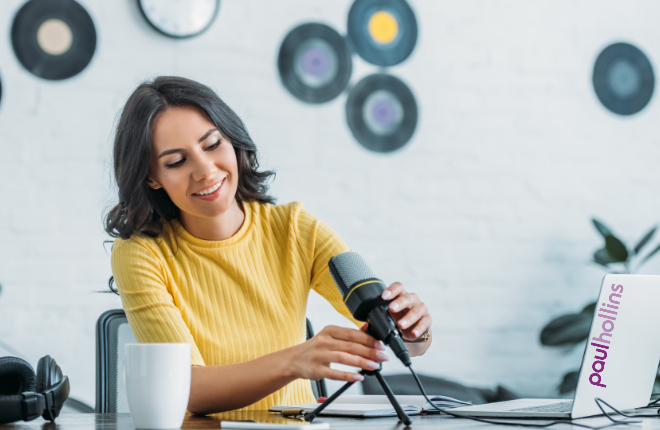If you’re recording at home, say in a bedroom or in your study, you may find you have a problem with unwanted echo.
While a small amount of echo is fine – and can actually make the recording sound a little ‘sweeter’ – if it’s too noticeable it can be distracting.
That’s when it’s worthwhile doing a little ‘sound-deadening’.
Notice how I didn’t say ‘sound-proofing’?
The reason for that is, this doesn’t need to be an expensive exercise at all!
What’s The Different Between Sound-Proofing & Sound Deadening?
Sound-proofing is where you try stopping sound waves from escaping (or entering) your recording space… whereas we’re simply trying to stop sound waves from bouncing around the walls & floors and causing ‘reverb’.
High ceilings and sound-reflecting surfaces, such as glass, stone, tile and hardwood often can produce unwanted echoes.
So by strategically placing soft furnishings it can really help.
Heavy curtains or drapes, a sofa, and a rug/carpet are particularly useful if you have wooden floors.
Grab A Duvet, It Helps
Believe it or not, a really effective way of sound-deadening is to pull a duvet over your head when you’re recording.
I know lots of voice-over artists and radio hosts who’ve done this.
In fact one of my voice-over friends travels a lot, so he rearranges the furniture in his hotel room and uses whatever he can find to help make the room sound as much like his home-studio as he can.
His ritual includes:
- Moving the desk, so that he can set-up his microphone and laptop.
- He makes sure that he sits with his back to the curtains, to help soak up and reflections of sound from behind.
- He then puts 1 pillow either side of the microphone, 1 behind and then another on top, so he forms a kind of ‘pillow house’ or ‘pillow cocoon’ around his microphone.
Finally he drapes the duvet over his shoulders and up over his head, and it’s really effective.
Planning
With a little thought you can certainly achieve great results without going to any real expense.
If that doesn’t work though, sitting in a parked car recording into your Smartphone, can actually yield some really good results.
The interior of a car is usually full of soft furnishings, so there’s very little echo, which makes it an ideal environment.
Other things to consider when recording at home is things like the phone ringing (it might be best to unplug it – if it’s a landline… or switch it off it’s a mobile). That way you won’t get interrupted.
One final tip: If you’re recording using your Smartphone, switch it to ‘Airplane Mode’ so your recordings aren’t interrupted by incoming calls or text messages.
Get more tips like this by signing up for my FREE Audio Course below.

